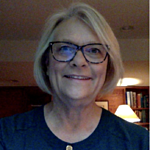Per- and polyfluoroalkyl substances (PFAS) are chemicals that are widely used in consumer products, industrial firefighting foams used on military bases and airports, and can be found in drinking water throughout Alaska and the US. In Alaska, the dispersive use of PFAS-based firefighting foams have contaminated the drinking water of communities from the North Slope to southeast Alaska.
The National Academies of Sciences, Engineering and Medicine (NASEM) special committee recently examined the health outcomes associated with the most widely studied PFAS and made recommendations on who, when, how, and what to test, as well as the risks of testing.
This webinar featured one of the report co-authors, Dr. Laura Anderko, who provided information on the principles used for framing clinician decision making when there is uncertainty in outcomes in the scientific literature, what potential health effects may be associated with exposure, recommendations for testing and clinical follow-up, and special considerations when engaging environmental justice communities. We also discussed how this information is relevant to Alaska and policy changes that are needed to protect public health.
Featured Speaker
 Laura Anderko PhD RN is Co-Director of the Mid-Atlantic Center for Children’s Health and the Environment, the federally funded Region 3 Pediatric Environmental Health Specialty Unit (PEHSU) at Villanova University College of Nursing.
Laura Anderko PhD RN is Co-Director of the Mid-Atlantic Center for Children’s Health and the Environment, the federally funded Region 3 Pediatric Environmental Health Specialty Unit (PEHSU) at Villanova University College of Nursing.
She has been a public health nurse for over 40 years, and is an educator and scholar focusing on environmental health for over 25 years. She served on a number of federal advisory committees, was a co-author of the recent NASEM report establishing guidance of PFAS testing and health.
 This call was hosted by the CHE-Alaska Partnership, which is coordinated by Alaska Community Action on Toxics (ACAT).
This call was hosted by the CHE-Alaska Partnership, which is coordinated by Alaska Community Action on Toxics (ACAT).
